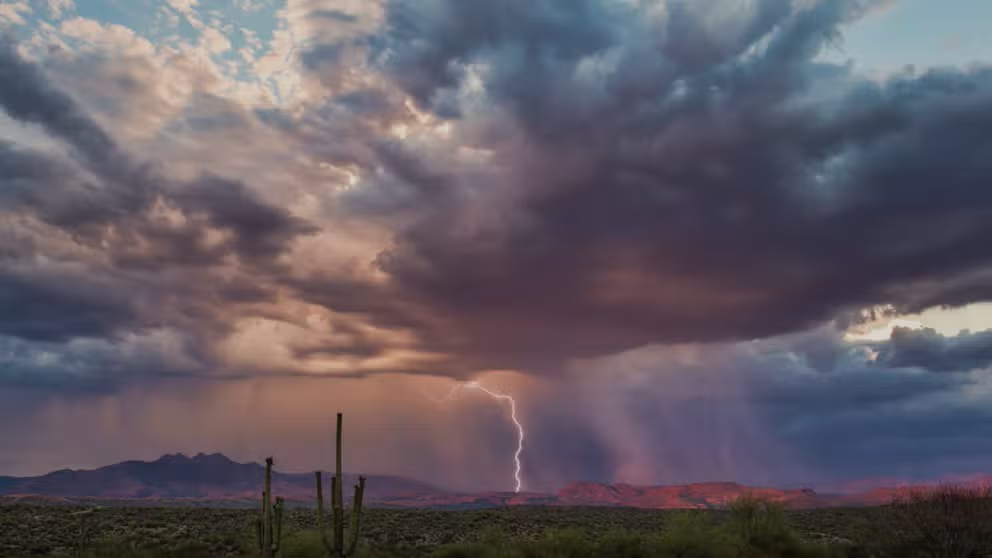Flash flooding washes away Interstate 10 near Arizona-California border
The roadway was damaged after a monsoonal surge struck the area and brought thunderstorms with heavy rain, gusty winds and dust.
Monsoon rain washes out I-10 near Arizona-California border
The roadway was damaged after a monsoonal surge struck the area and brought thunderstorms with heavy rain, gusty winds and dust.
RIVERSIDE COUNTY, Calif. – Thousands of travelers and truck drivers bound for Arizona are being rerouted after raging floodwaters washed out the eastbound 10 Freeway in Riverside County near the Arizona-California border.
Caltrans shared photos of the washout on social media that showed a huge piece of the road collapsed. The roadway was damaged after a monsoonal surge struck the area and brought thunderstorms with heavy rain, gusty winds and dust, according to a report from FOX 11 Los Angeles.
HOW TO WATCH FOX WEATHER ON TV
Drivers should expect major delays on the 10 Freeway east of Highway 177 near Desert Center. The closure won't impact those going to Palm Springs as the closures start east of Indio.
Initially, Caltrans said both directions of the 10 Freeway were closed due to flooding and an overturned big rig. The westbound lanes eventually reopened late Wednesday night, although traffic remained at a crawl.
Caltrans maintenance crews worked through the night to clear mud and water from Highway 177, and some drivers were left stranded.
Drivers may continue to face major delays, and Caltrans suggests using an alternate route, including taking Highway 62 to get back onto the 10 Freeway in Whitewater.
It's unknown when the eastbound lanes will reopen.
Monsoon season in the Southwest
7 Facts About Monsoon Season
Here are 7 facts about monsoon season.
The Southwest monsoon season begins June 15 and lasts through Sept. 30 each year.
Monsoon is a term given when winds blow tropical air toward typically desert locations, and Arizona and the California deserts certainly qualify.
According to the National Weather Service, a ridge of high pressure in Mexico blocks any moisture from reaching the Southwest in early June, allowing for days of hot, dry weather. Later in June and into July, the ridge drifts north into the Four Corners region of the U.S., allowing some tropical moisture to be carried northward from the Gulf of California and the Pacific Ocean.
Combine the desert heat with the copious amounts of tropical moisture, and you have a setup ripe for strong thunderstorms with torrential rain. What's more, northern Arizona is home to the Mogollon Rim, an area of high elevation that can provide the additional lift needed to trigger the development of thunderstorms that will often drift into the Phoenix area.




